Flowers and seeds -> central nervous system
Structure of the Central Nervous System
- Brain: The brain is the command center of the nervous system and is responsible for processing and interpreting sensory information, initiating motor responses, and controlling higher cognitive functions such as thinking, learning, and memory.
- Spinal Cord: The spinal cord is a long, thin, tubular bundle of nervous tissue that extends from the base of the brain to the lower back. It serves as a conduit for nerve signals traveling to and from the brain, and also plays a role in reflex actions.
Functions of the Central Nervous System
The CNS performs several vital functions, including:
- Integration: It integrates sensory information from the environment and coordinates appropriate motor responses.
- Control: It controls voluntary movements, involuntary actions (such as heartbeat and digestion), and the regulation of bodily functions.
- Processing: It processes and interprets sensory input, allowing us to perceive the world around us and respond accordingly.
Components of the Central Nervous System
The CNS is made up of different types of cells and tissues, including:
- Neurons: These are the basic building blocks of the nervous system, responsible for transmitting electrical and chemical signals throughout the body.
- Glial Cells: These support cells provide structural support, insulation, and nutrients to neurons, as well as help in the formation of myelin, a fatty substance that insulates and protects nerve fibers.
Protection of the Central Nervous System
The CNS is protected by several layers of membranes and fluid-filled spaces, as well as by the skull and vertebral column. The protective mechanisms include:
- Meninges: Three layers of membranes (dura mater, arachnoid mater, and pia mater) that surround the brain and spinal cord, providing cushioning and protection.
- Cerebrospinal Fluid: A clear, colorless fluid that surrounds the brain and spinal cord, acting as a shock absorber and providing nutrients and waste removal for the CNS.
- Blood-Brain Barrier: A selective barrier formed by the endothelial cells of capillaries in the CNS, which regulates the passage of substances between the bloodstream and the brain to protect it from potentially harmful agents.
◂Science Worksheets and Study Guides Fifth Grade. Flowers and seeds
Study Guide Flowers and seeds
Flowers and seeds  Activity Lesson
Activity Lesson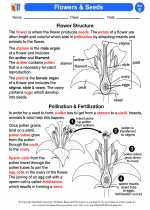 Flowers & Seeds
Flowers & Seeds  Worksheet/Answer key
Worksheet/Answer key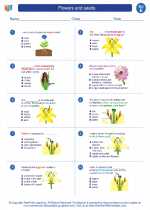 Flowers and seeds
Flowers and seeds  Worksheet/Answer key
Worksheet/Answer key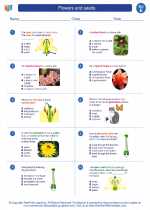 Flowers and seeds
Flowers and seeds  Worksheet/Answer key
Worksheet/Answer key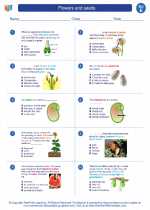 Flowers and seeds
Flowers and seeds  Worksheet/Answer key
Worksheet/Answer key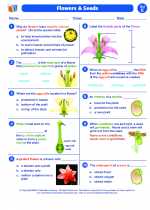 Flowers and seeds
Flowers and seeds  Vocabulary/Answer key
Vocabulary/Answer key Flowers and seeds
Flowers and seeds  Vocabulary/Answer key
Vocabulary/Answer key Flowers and seeds
Flowers and seeds 

 Activity Lesson
Activity Lesson
 Worksheet/Answer key
Worksheet/Answer key
 Worksheet/Answer key
Worksheet/Answer key
 Worksheet/Answer key
Worksheet/Answer key
 Worksheet/Answer key
Worksheet/Answer key
 Vocabulary/Answer key
Vocabulary/Answer key
 Vocabulary/Answer key
Vocabulary/Answer key

The resources above cover the following skills:
Life Science
All organisms have structures and systems with separate functions. Students can:
Develop and communicate an evidence-based scientific explanation of the role of different organs or structures that are important for an organism's survival - in both plants and animals